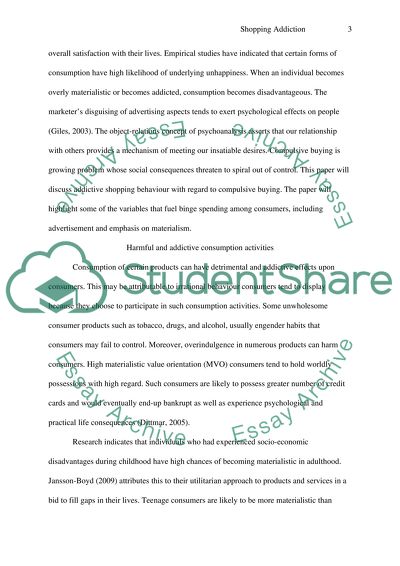Cite this document
(“Essay on Shopping Addiction Example | Topics and Well Written Essays - 2250 words”, n.d.)
Retrieved from https://studentshare.org/psychology/1452789-shopping-addiction
Retrieved from https://studentshare.org/psychology/1452789-shopping-addiction
(Essay on Shopping Addiction Example | Topics and Well Written Essays - 2250 Words)
https://studentshare.org/psychology/1452789-shopping-addiction.
https://studentshare.org/psychology/1452789-shopping-addiction.
“Essay on Shopping Addiction Example | Topics and Well Written Essays - 2250 Words”, n.d. https://studentshare.org/psychology/1452789-shopping-addiction.


